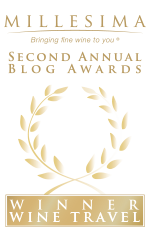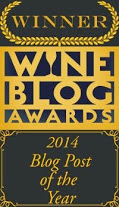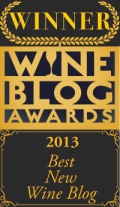 |
Wine shouldn’t be foisted onto every culinary event; no matter how grand or mundane, some matches are better left alone: the Kentucky Derby and bourbon, or bagels, lox, and black coffee (OK, a glass of Champagne wouldn’t be so terrible with either). “Super Bowl & Beer” sounds like another archetype that doesn’t need tinkering. But there’s a case to be made for wine.
Consider traditional binge-watching football foods: bean chili, beef-cheese-jalapeño-smothered nachos, Sriracha hot wings, short-rib sliders, guac and chips. At first glance, pairing wine with any of these might sound like a disastrous exercise in pretentiousness. On closer examination, though, there are, in fact, a number of wines that would temper heat, complement spice and salt, and cut through fat better than a beer. We’re not suggesting you forgo the keg of Founders All Day IPA, but consider supplementing your beverage rotation with these five wines.
Sparkling Wine
By now, perhaps you’ve heard of the Sommelier Special: pairing a high-brow bottle of Champagne with a humble bag of Lay’s. Champagne’s chalky, bright acid and persistent stream of effervescence has a way of cutting through fried, oily dishes like chips and fried chicken. But Champagne is expensive, and few of us wish to waste it on a bag of spuds (or our Patriots-supporting frenemies). Look to American bubbles instead.
Roederer Estate Brut, NV, California, $21: Best-value, complex American sparkler made using the Champagne method.
Zinfandel
I’m not talking about the white kind (that comes in a box and is called Franzia), but the ripe, juicy red stuff pumped out of the classic regions of Sonoma, Lodi, and the Dry Creek Valley in California (also found in Southern Italy, where it’s called Primitivo). If you’re inclined to pair junk food with your vino (no judgment), you might enjoy the synergy found between a sip of Zinfandel and a mouthful of spicy Doritos, a ubiquitous Super Bowl snack. Zin also complements spicy-sweet meat dishes like pulled pork, and baby-back ribs doused with Dinosaur BBQ sauce.
Bedrock “Old Vine” Sonoma Valley, California, 2013, $25: Full-bodied, lush, with black cherries and spice.
Sherry
This fortified wine from Andalucía in southern Spain elevates salty foods like cured meats (ordering a six-foot-long Italian sub?), olives, and peanuts, and fried finger foods such as calamari, spring rolls, or croquettes, from mindless pop-in-your-mouth status to “holy crap, what did I just eat?” sublime. Pick up a crisp, bone-dry, saline Fino (made via the biological method; no oxidation) and a richer, nuttier style like amontillado.
Valdespino, Fino “Inocente” NV (375 mL), $12.99: Tastes of almonds and ocean breezes.
Lustau Dry Amontillado “Los Arcos” NV, $15.99: Nuts, dates, dried fruit.
Sauvignon Blanc
This crowd-pleasing, workhorse white pairs surprisingly well with chile-pepper-laden dishes, especially bell peppers, jalapeños (which have a flavor profile also found in Sauvignon Blanc), poblanos, anchos, and serranos. Notoriously difficult wine pairings like artichokes (found in dips or fried), tomatoes (think salsa), and the herb cilantro (also in salsas, guacamole, and most Mexican food) love Sauvignon Blanc. The wine’s bright flavors range from herbal to tropical; classic examples are from New Zealand and Sancerre, but South Africa increasingly makes compelling, well-priced versions.
Seresin, Marlborough, New Zealand, 2012, $24.99: More money, more complexity than the typical NZ S.B.
Mulderbosch, Stellenbosch, South Africa, 2014, $14.99: Easy to find, easy to sip, a little grassy, and a little tart.
Rosé
Who says you can’t drink pink in the winter? Or while watching football? To quote Julia Child, who incontrovertibly knew her shit, “Rosés can be served with anything.” Why? Rosé straddles the world of white and red: It delivers zippy, palate-cleansing acidity with enough body and fruit to stand up to typically heavy game-day dishes. Dry rosés work particularly well with charcuterie, BBQ, hamburgers, pork, and even sausage. Like she said: anything. The only problem with rosé is tracking it down in the middle of winter. Fortunately, Sherry-Lehmann stocks emergency cases of pink year-round.
Chateau d’Aqueria, Tavel, France, 2013, $18.99: Ripe berry fruit, a hint of tannin, and fresh acidity.
Where to Buy:
Astor Wine & Spirits, 399 Lafayette Street, 212-674-7500
Sherry-Lehmann, 505 Park Avenue, 212-838-7500










